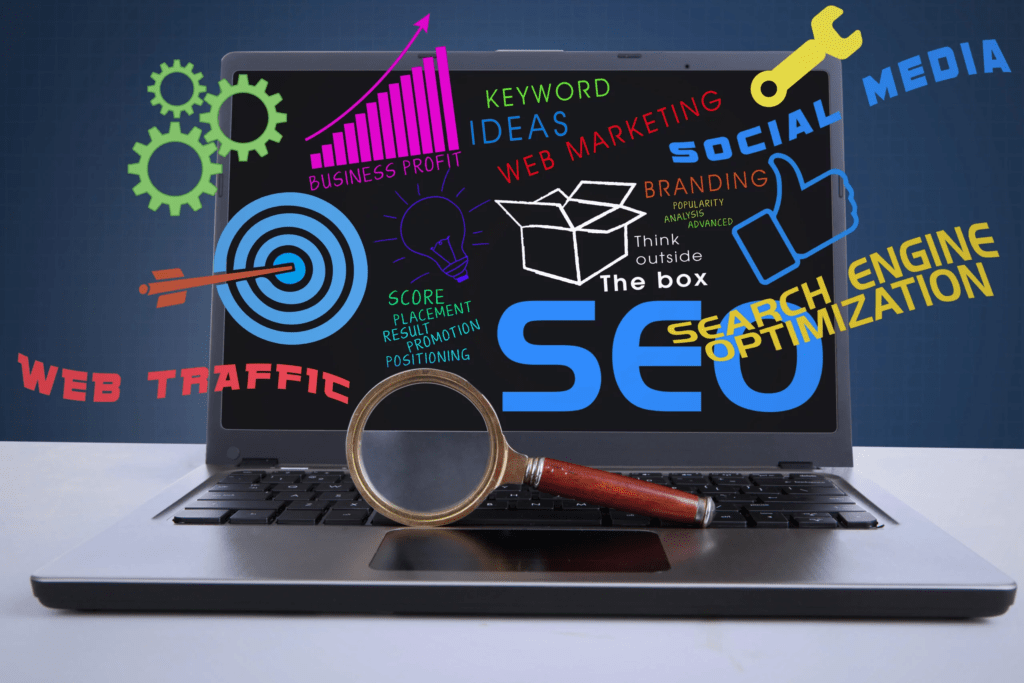How AI and Machine Learning Shape Semantic SEO in 2024
Businesses looking to ensure visibility and interaction in search results now rely heavily on semantic SEO. By 2024, semantic SEO will have undergone a significant transformation thanks to developing technologies like artificial intelligence (AI) and machine learning, which will produce user experiences that are more relevant, contextually aware, and personalized.
Introduction
Delivering value through content optimization for context, relevance, and user intent is the main goal of semantic SEO. Semantic SEO seeks to match your content with how search engines interpret human language, as opposed to traditional SEO tactics that place a higher priority on keywords.

What is Semantic SEO?
The goal of semantic SEO is to provide material that answers user searches in a comprehensive way, emphasizing meaning over specific words.
The Shift from Keywords to Context
Simple keyword matching is no longer enough for search engines. In order to provide consumers with the most pertinent content, they now assess context, synonyms, and related topics.
Why Semantic SEO Matters in Modern Search
Users of today need prompt and precise responses to their questions. By bridging the gap between search engine capabilities and user expectations, semantic SEO makes sure that everyone has a better experience.
The Role of AI in Semantic SEO
The way search engines comprehend, index, and rank content has been drastically changed by artificial intelligence.
How AI Enhances Search Engine Algorithms
Natural Language Processing (NLP) and BERT
Search engines may now comprehend human-like requests by using technologies such as Google’s BERT (Bidirectional Encoder Representations from Transformers), which allows them to interpret linguistic nuances. For instance, AI can comprehend full phrases like “How do I fix my computer?” rather than only searching for keywords.

Understanding User Intent at Scale
AI assists search engines in determining the purpose of unclear inquiries. When someone searches for “apple,” for instance, AI can determine if the user is referring to the fruit or the tech business.
AI-Powered Tools for Semantic SEO
Semantic Analysis Platforms
To make sure your content complies with semantic SEO guidelines, platforms such as MarketMuse identify content gaps and recommend changes.
AI for Content Optimization
By evaluating readability, contextual depth, and keyword relevancy, AI-powered tools such as Clearscope and SurferSEO assist in optimizing already-existing material.
The Role of Machine Learning in Semantic SEO
Together with AI, machine learning allows search algorithms to be continuously improved through the analysis of user interactions.
Machine Learning’s Contribution to Search Evolution
Training Algorithms for Better Search Results
By “training” algorithms with machine learning, search engines are better able to rank information according to actual user behavior.
Predictive Analytics for Search Trends
By using machine learning models to forecast popular subjects, marketers may provide content that speaks to new user interests.
Key Impacts of AI and Machine Learning on Semantic SEO
Enhancing User Experience Through Personalization
Personalized Search Results
AI provides distinctive and personalized experiences by personalizing search results according to user preferences.
Improving Content Discovery and Contextual Relevance
AI and machine learning improve content discoverability by making relevant topic suggestions based on user behavior analysis.
Best Practices for Leveraging AI and Machine Learning in Semantic SEO
Optimize for User Intent, Not Just Keywords
Instead of cramming keywords into your writing, concentrate on producing content that provides thorough answers to customer queries.

Utilize AI-Driven SEO Tools
Use AI-powered tools to find holes in information, improve content, and efficiently monitor results.
Create High-Quality, Context-Rich Content
Put quality before quantity. Make sure your material speaks to the user’s intent and has depth.
Challenges in Implementing AI and Machine Learning for SEO
Data Privacy Concerns
AI gathers a lot of data, thus protecting user privacy and adhering to laws like GDPR are crucial.
Navigating Algorithm Updates
Keeping up with frequent revisions can be difficult for marketers. It’s important to stay informed.
The Future of Semantic SEO
Continuous Learning Algorithms
AI systems will advance in complexity and be able to instantly adjust to the demands of users.
AI-Powered Content Generation
Soon, AI technologies will be able to produce user-focused, context-rich content with little assistance from humans.
Conclusion
Semantic SEO is being revolutionized by AI and machine learning, which prioritize user intent, relevance, and customization. Businesses may provide outstanding user experiences and stay ahead of the competition by utilizing these technologies.
FAQs
- What is semantic SEO, and how is it different from traditional SEO?
Semantic SEO goes beyond keyword-centric tactics by emphasizing context and user intent. - How does AI improve semantic search?
AI makes it possible for search engines to comprehend user queries more fully, yielding more precise results. - Are there any risks of relying heavily on AI for SEO?
Reduced human oversight and privacy issues may result from over-reliance. - What are some AI tools for semantic SEO?
Clearscope, MarketMuse, and SEMrush are some of the tools that help with semantic SEO content optimization. - How should I prepare my SEO strategy for 2024?
Pay attention to user intent, make advantage of AI-powered tools, and create insightful, contextually rich content.







